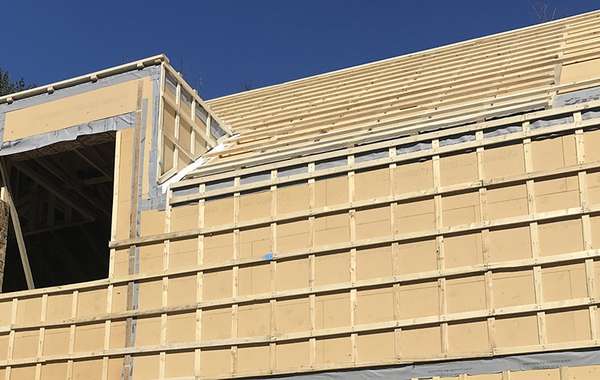What is the best way to insulate a 2x8 wall?
I have been reading so much on insulation ....and out of the foam boards I think eps might be the best to use, but not sure if the foil face would be good, may not be breathable...might be better to just do eps board and buy attic foil to put over that .....this might be the cheapest way to get some insulation on the out side of the building for the thermal break .....rock wool would be good if I could find 4x8 sheets and do a price comparison. So I would have 2x8 studs then osb then some thermal break , breathable foil , 3/4 space then sheathing. Inside I was thinking of 2" of spray foam or 2 layers of 4" foam board not sure which kind would be best ......or spray foam and fill the rest with rock wool....it would be nice to talk to someone on this situation to get a good understanding of what to do with limited money....is there a contact number
'



























When looking for the best way to insulate a wall you need to assemble it in a way that not only meets building code, but that is the right way to build in your specific climate zone. Where are you located? Given that amount of research you’ve done on insulation I am assuming you live in a cold climate. Regardless of climate though, you need to understand what you are expecting your wall to do. We don’t have phone support but you can learn about how a wall works in this video –
Building science made easy for high performance energy efficient homes
A few things you mention stand out though, and I think you might have seen our page on choosing the best rigid foam insulation, and in there it talks about the different properties of each material. Specifically I would point out that foil is not breathable, so it is not something you want on the outside of a building in a cold climate, since foil is as good a vapor barrier as you will ever find and you don’t want one on the outside of a wall in a cold climate as it will trap moisture and risk rotting your wall components.
Rockwool comes in batt insulation as well as rigid, so I wouldn’t be cutting it up to fit anywhere, they should have the sizes you need. Rockwool, (formerly known as Roxul), is very permeable to moisture so while it isn’t the cheapest, it is the most foolproof as it won’t ever trap moisture like some foam insulation can.
Spray foam is a viable option, though it is certainly not cheap. And if you do it we would highly recommend you source a spray foam brand with eco-friendly blowing agents, read more here.
There is a lot you have brought up here, so for the shortest of short answers, I would pitch you the idea of 7.5" rockwool batts, and perhaps some rigid rockwool boards on the outside. Outside of that I would propose you watch that building science video above if you haven’t already stumbled over it, that way you can take that info into the pages about insulation, air barriers vapor barriers etc, which will likely help as you try to settle on a wall system.
Ok on the is what I was thinking not breathable.....there is a product that is foil that is breathable ... so I was thinking I would put eps or rock wool on top of the osb board then put the attic foil on top of that ...this is to be used instead of tyvek and works the same....is there a 4x8 1" rock wool board out there I have not found any...thanks
Rockwool has, or at least Roxul had, 2 inch thick 2x4 panels of comfortboard that we used once by attaching them with strapping. If it were me I would lean towards some sort of mineral wool product over EPS, since once you start putting EPS and OSB together the permeance really drops fast. And same with the foil – a ‘breathable’ foil likely has perforations, which would make it *more* breathable but I would look at the product specs before I stuck it on the outside of building. There is a surprising amount of building products and techniques that are allowed and even encouraged by a lot of building codes that actually make no sense whatsoever and lead to a lot of building failures.
This page here has a lot about permeance and it will help you understand the risks -
How to choose the right house wrap weather barrier
All that to say, when it comes to managing vapor movement through walls I would be careful on the outside with too many products that inhibit the ability of moisture to escape. That’s what we like about mineral wool, it’s the safest bet. Where are you located Michael?